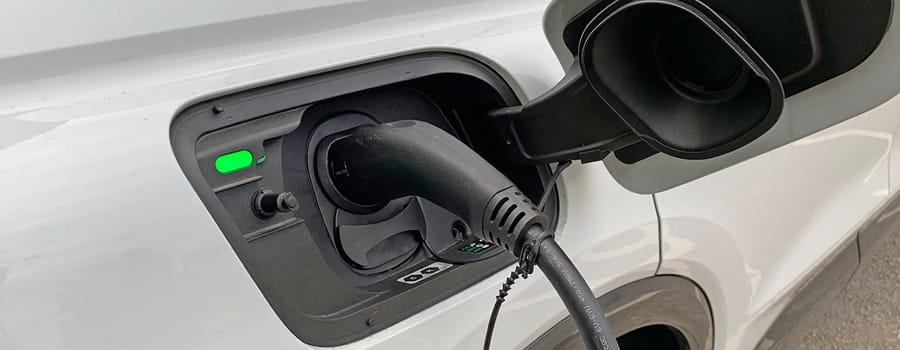Electrifying fleets: how to plan for EVs

One thing is clear with the UK automotive market – it's going electric. Customer trends and government regulations are all pushing UK drivers into EVs, so it's best to be prepared.
Research shows that many drivers don't plan ahead for the switch to electric, and with increasing numbers of EVs hitting the road, what can be done to make them greener, and get them onto the road as quickly as possible?
EVs set to quickly shake up fleets
According to EV charging specialists Crowd Charge, pure-electric vehicles are expected to make up 50% of new registrations by financial year 2025/26.
Having tracked EV data for several years, the firm's recent forecasts have proven largely accurate - Covid-19 impacts notwithstanding. As such, fleet operators and managers will need to adjust how they operate in the coming years to accommodate increasing numbers of electric vehicles.
This preparation is required in both the car and LCV spaces, as well as at fleet and individual level. There is a requirement for drivers to easily access the charging they require, and for managers to ensure their fleet vehicles are fit for purpose.
While many EVs can deal with the demands of drivers' daily mileages - not all, but most - it is important to factor in charging to ensure the EVs can fulfil requirements, without penalising the employee.
Making charging simple and affordable
Employers can benefit from lower running costs and tax advantages - something shared by the employees as well - but to push EV into a fleet when the requirements aren't met will see a loss in productivity, money, and resistance from a workforce to drive unsuitable vehicles.
As such, utility firms such as
Octopus Energy
are able to offer packages that bundle everything together. By providing a home or workplace EV charge point, access to public charging networks, and energy tariffs designed to suit those who charge an EV at home in one package.
This is designed to get EV drivers everything they need to run ‘normally' quickly and efficiently. Data from the company shows that typically, it takes around five to six months of research before customers are ready to get their order for an EV in.
There is then the delivery time, which would typically take a couple of months before the vehicle arrives on the driveway, at which point, only 12% of existing and prospective EV drivers questioned have everything they need set up to be able to conveniently charge that vehicle.
Once the vehicle arrives, most will then get their charge point installed, switch their home energy tariff, and think about charging on public points, which come within weeks or months after the EV is already in use, costing more money, creating inconvenience and a potential barrier to usage.
The argument is that for drivers to make the most of the benefits EVs offer, they need to be fully prepared before the vehicle arrives.
Get electric experience early
For those managing fleets in particular, Gateway2Lease director Rob Marshall recommends getting EVs onto the road as soon as possible; starting the changeover and learning lessons early.
The same is true of both electric cars and vans, though the car market is a few years ahead of LCVs currently. EVs are quickly becoming normal in the car market, and switching over is taking place at pace.
This is largely because of longer driving ranges and greater choice available, but there are also fewer variables. A fully-loaded electric car has less impact on range over an unladen one than a van carrying a full load over an empty one.
“Independent tests of e-LCVs show that the difference between electric and diesel vans isn't great when looking at how close they get to the official range or economy scores,” explains Rob Marshall.
“An unladen electric van, driven in chilly December conditions, can reach on average around 72% of its official WLTP driving range. Fully laden, that drops to around 64% of the WLTP range.
“Both percentage differences are similar to that found with diesel vehicles when it comes to range and fuel economy, it's just that conventional vans have a far greater range to start with.
“So e-LCVs become a case of best-fit, and to do that, the easiest way to see how they fit a particular business' needs is to get wheels on the ground and test it in real world conditions - with the loads a driver would actually carry, on roads they actually drive on, and in weather that is actually found on a chilly January evening.”
Marshall advises that once data is available to show a ‘worst-case' scenario, managers can then start to make decisions as to where these e-LCVs can be implemented. They then know the minimum range of an electric van, and any more miles achievable are a bonus.
As such, it is recommended that e-LCVs start to be brought into the fleet as part of the normal replacement cycle, whether that employee's vehicle is currently suitable for electric vehicles or not. The manager can then switch the vans around, handing the electric van to a driver whose work suits the shorter mileage available, and bringing their existing diesel back as a ‘new' van for the initial driver.
That way, fleets are electrified as quickly as possible, but with minimum impact on budgets and operations, setting the company up for future regulations.
If you want more advice on switching to electric vehicles for your business, our team of experts at Gateway2Lease will be happy to assist and answer any questions you may have. Call 01299 407 360 and speak to us.
View our latest blog posts

Categories
Pages
We are a family run business based in rural Worcestershire. Our team of 38 staff are on hand to provide an exceptional service to personal and business customers.
Read More
